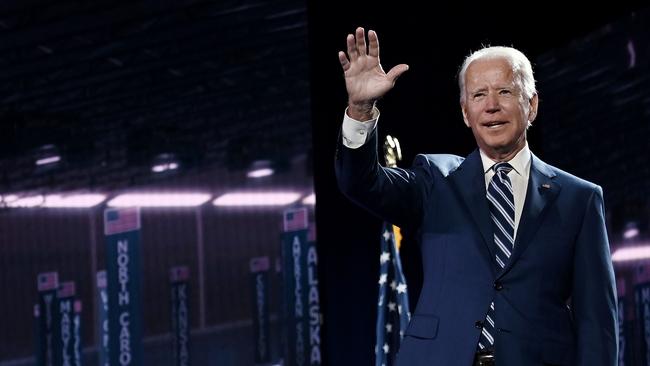
No doubt investors would prefer the devil they know, particularly when it comes to Trump, who has mostly pursued policies that promote US corporate profitability.
A rapidly narrowing gap between Trump and Joe Biden coincided with an acceleration in the S&P 500 and Nasdaq 100 to record highs last month, but extreme monetary policy stimulus and expectations of more stimulatory fiscal policy have been the main drivers.
Unless the betting odds now swing sharply in favour of Trump, the market will be left with the worrisome prospect of a closely contested presidential election.
Such an outcome could cause social chaos that stymies US economic recovery, particularly if it hampers additional fiscal stimulus as monetary policy nears the effective lower bound.
While the S&P 500 surged after Trump’s narrow election win in 2016, that was off a much lower base, and it fell as much as 5 per cent in the three months leading up to the election.
The risk of a close US election is one of two risks identified by JPMorgan’s head of global quantitative and derivatives strategy, Nikolaos Panigirtzoglou, in a report over the weekend.
The other risk he sees is that the Federal Reserve doesn’t announce significant new policies — like an increased rate of asset buying, outcome-based monetary policy guidance, yield curve control or negative interest rates — at its September 16 FOMC meeting to back up the change in its dual mandate at the virtual Jackson Hole economic policy symposium.
Fed chair Jay Powell’s Jackson Hole speech enshrined the view already articulated by FOMC board members: that inflation should be allowed to run above its 2 per cent target and employment should be allowed to go above its “maximum” non-inflationary rate to make up for the decade-long run of below-target inflation, while economic slack remains in the economy. That was all well and good but the question now is what is the Fed going to do to achieve that.
The US yield curve steepened before last week’s announcement of the new policy framework as rate markets have priced in higher growth and inflation prospects.
Equity markets have responded by pricing in higher growth and inflation expectations, with the defensive and more interest rate-sensitive sectors such as utilities and real estate underperforming while more consumer-facing sectors have outperformed, notes Panigirtzoglou.
The market’s assumption is that the Fed will indeed support its new policy framework by accompanying it with more stimulus and/or stronger guidance for a long period of low rates. But given the apparent aversion of Fed officials to negative rates and yield control, he thinks extra QE or enhanced forward guidance are the main stimulus choices for the September meeting.
“A failure by the Fed to back its new framework with some policy action in its September meeting is likely to be a disappointment for risk markets,” Panigirtzoglou says.
As for the presidential election, he argues that the test is not so much about who wins but rather the closeness of the outcome.
“While the two candidates would have different implications for certain sectors, both candidates are likely to eventually create an overall positive impulse for risk markets by delivering new fiscal stimulus, and the stronger the win the faster and more decisive the new stimulus is likely to be, especially if the president controls the Congress also,” he says.
“The test for markets is instead related to the closeness of the result of the election, (as) a very close result is likely to be contested, resulting in political gridlock and a lack of policy action, potentially for months after the election.
“Political gridlock and a lack of policy action are likely to have a negative impact on risk markets.
“The fact the odds of the two candidates are narrowing again towards 50:50 suggests that the probability of such gridlock is rising, which by itself raises the probability that some investors will take some risk off the table ahead of the election.”
Real Clear Politics’ average of betting odds narrowed to a small gap — with Trump at 48.7 per cent and Biden at 50.6 per cent — down from a massive 24 point gap on August 2.
According to Panigirtzoglou, the FOMC meeting and the election are now “clearly presenting downside risks for equity and risk markets for the near term, that is, into September/October.”
But longer term he sees “plenty of upside for equity markets given still low equity positioning”.
Thus “a retreat in equity and risk markets during September or October would likely represent a buying opportunity”.








US President Donald Trump’s greatly improving chances of re-election this November could turn out to be a double-edged sword for the US stockmarket and, by extension, the Australian market.